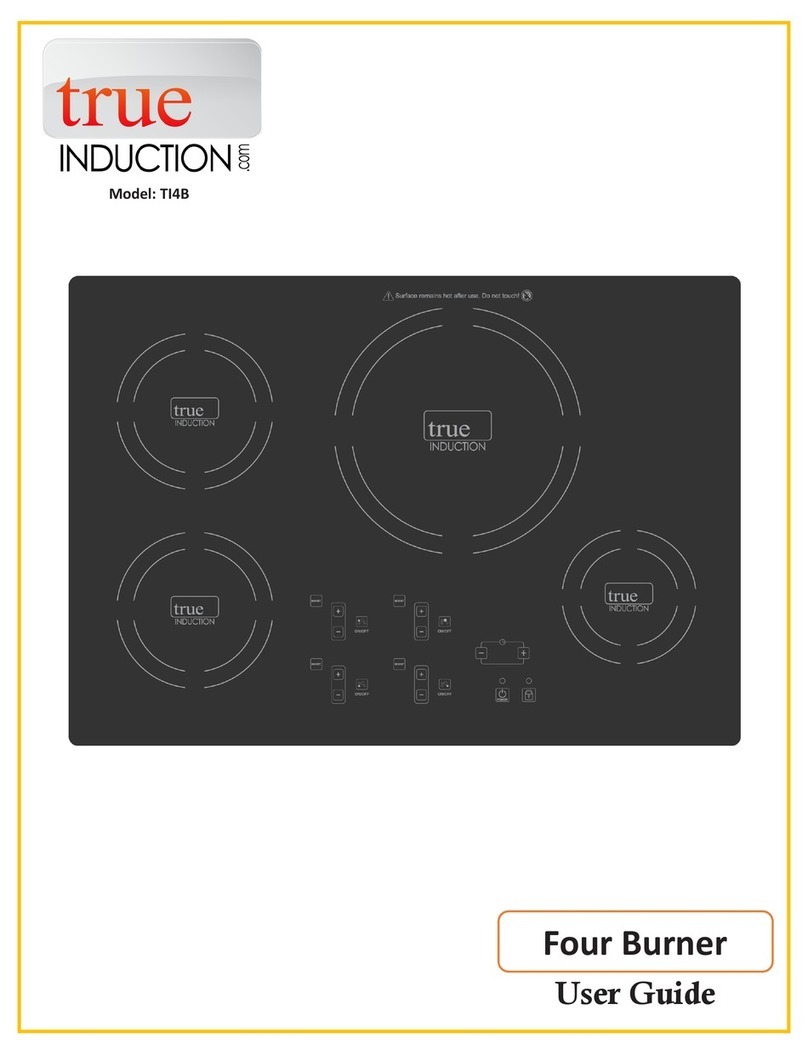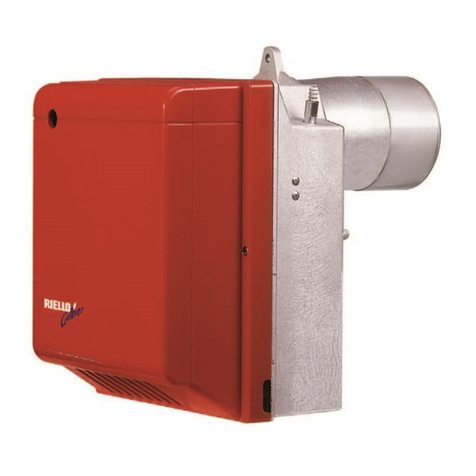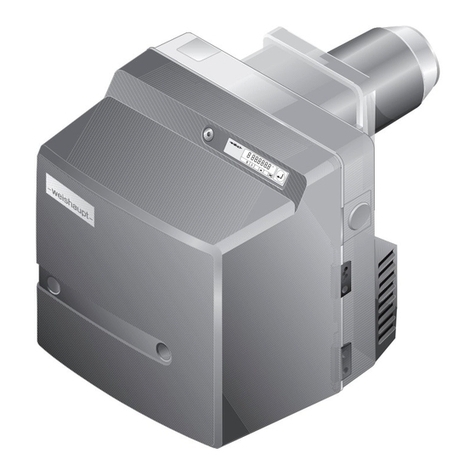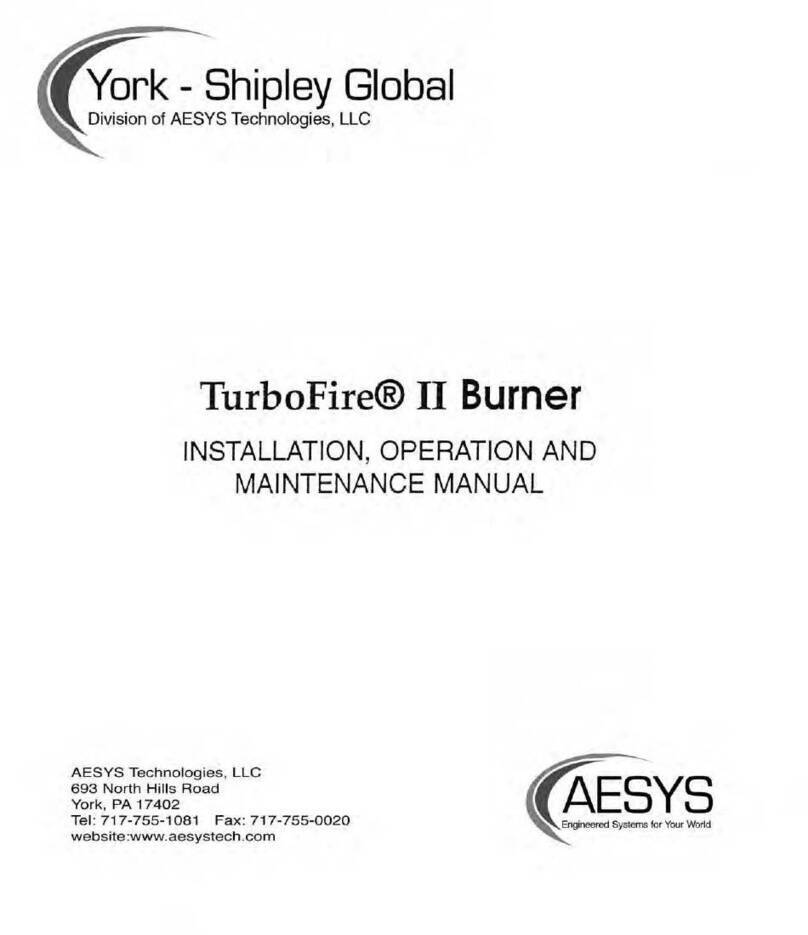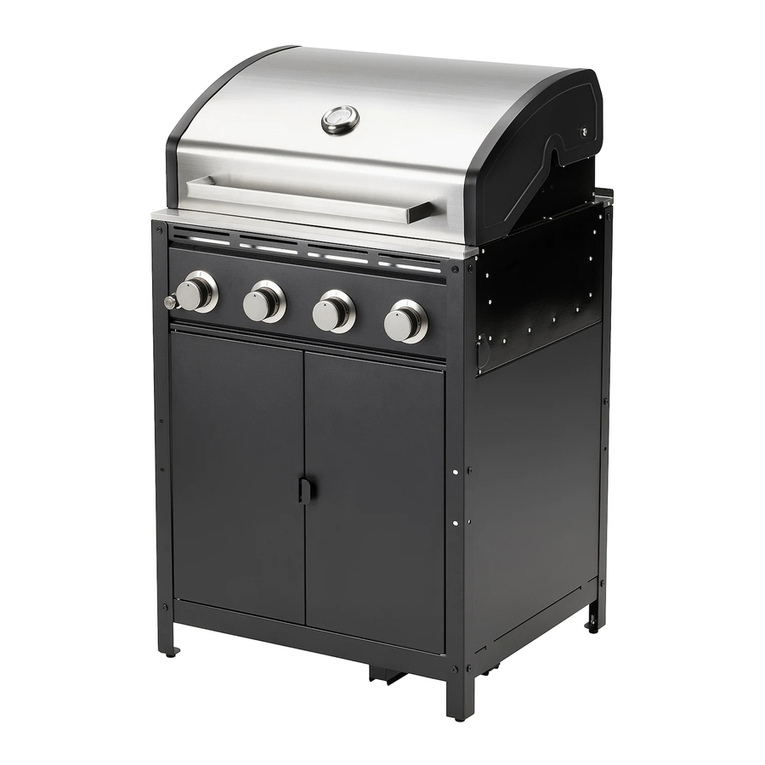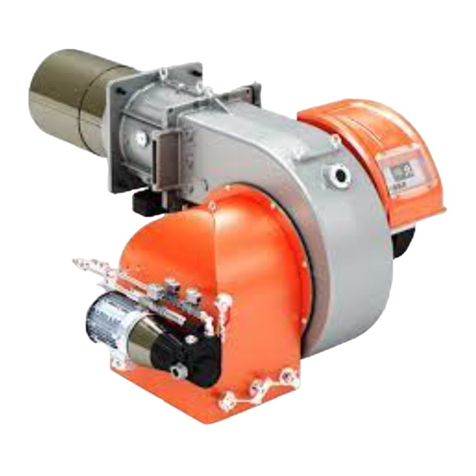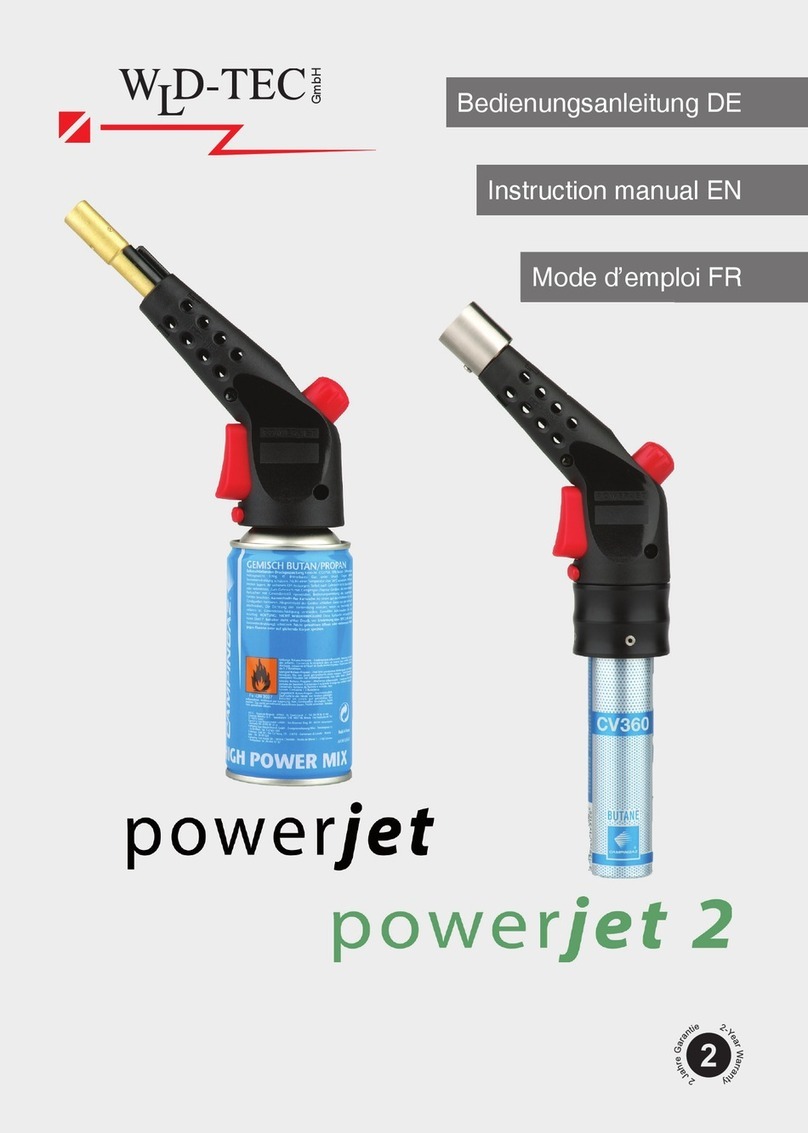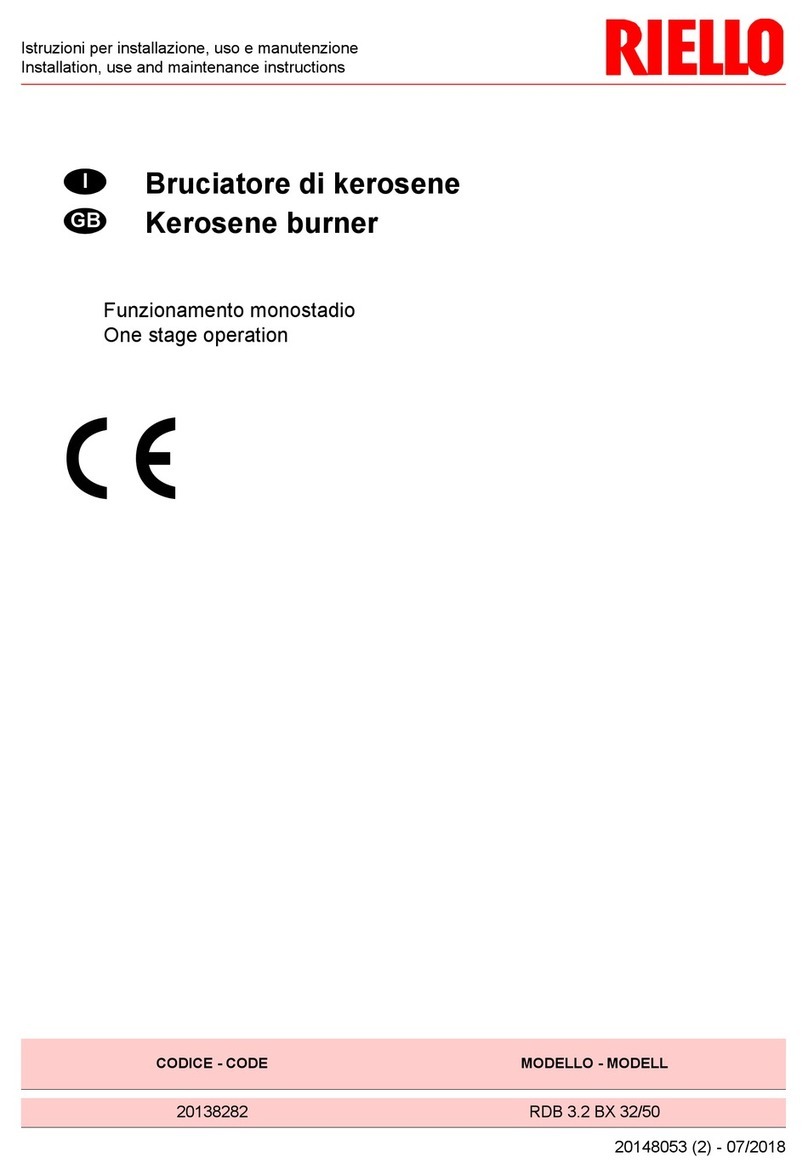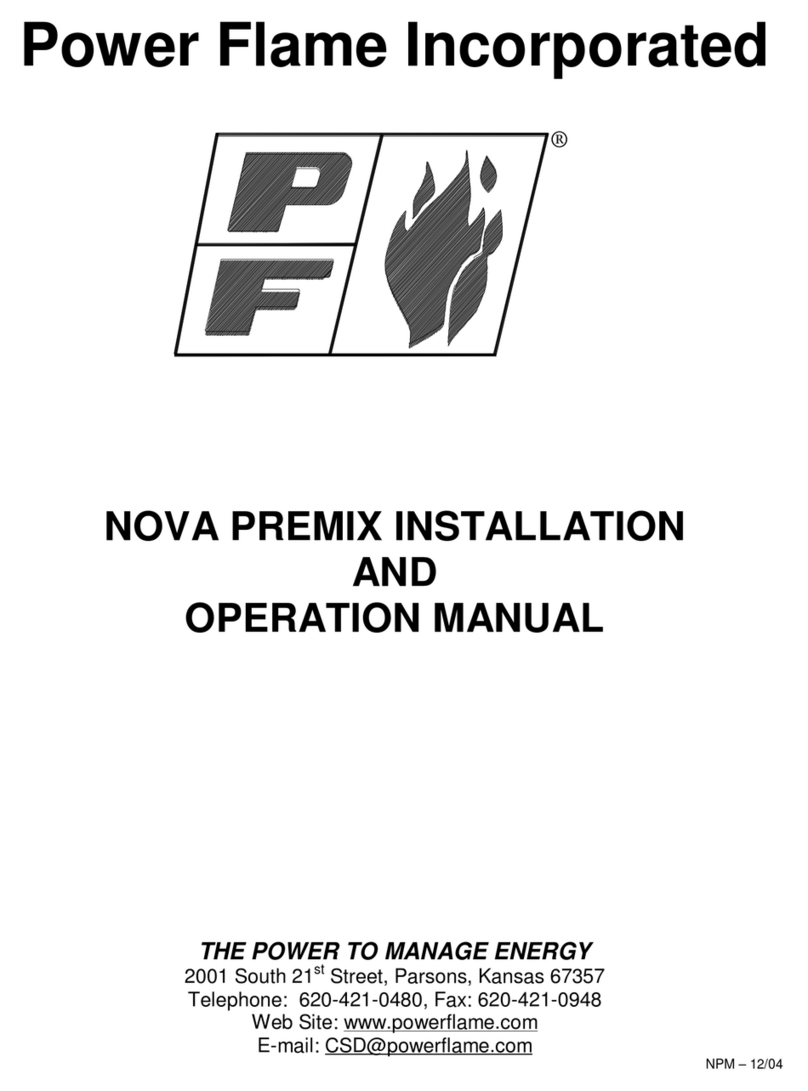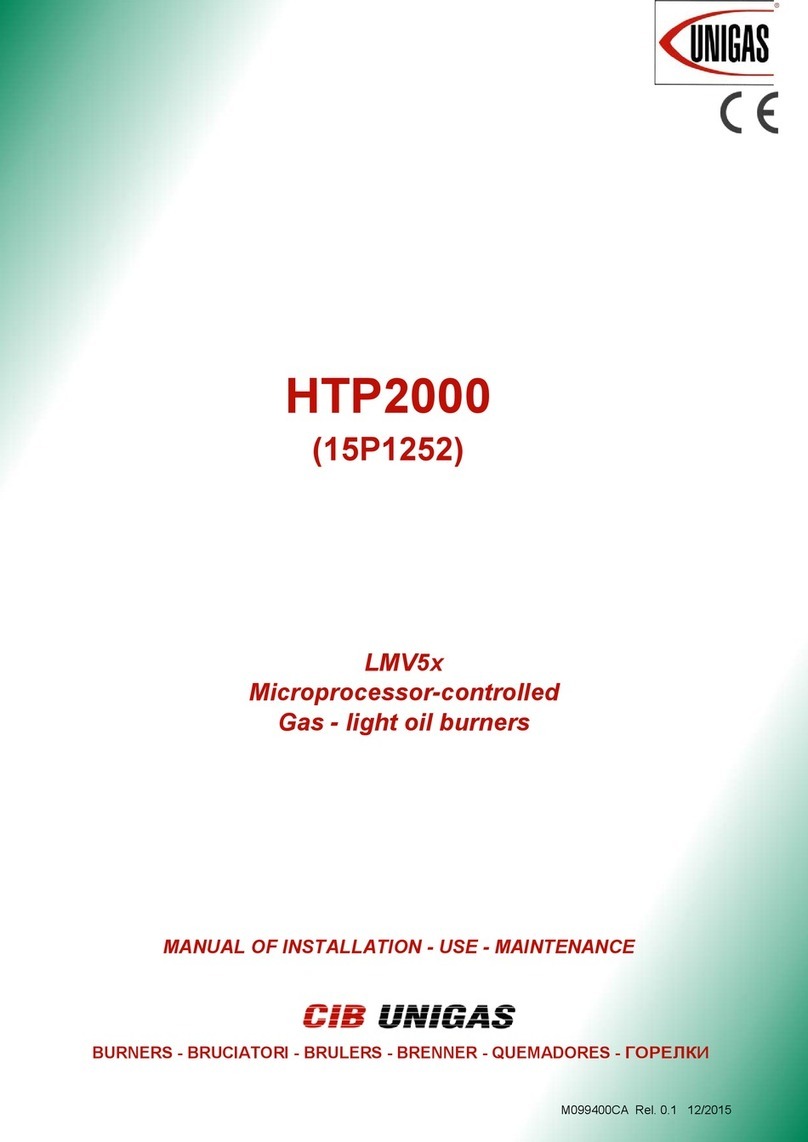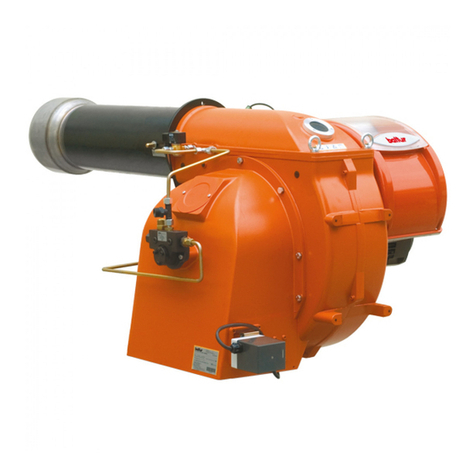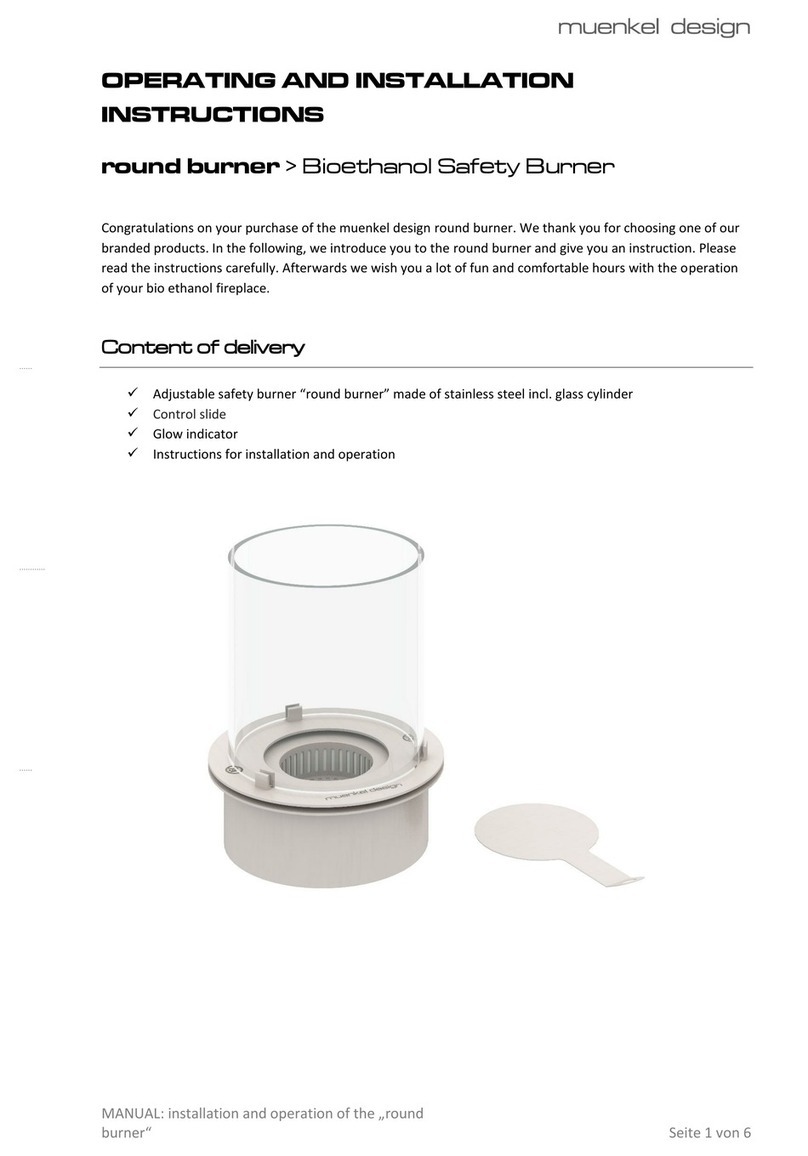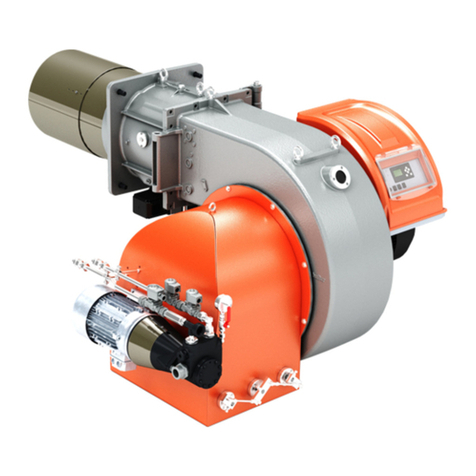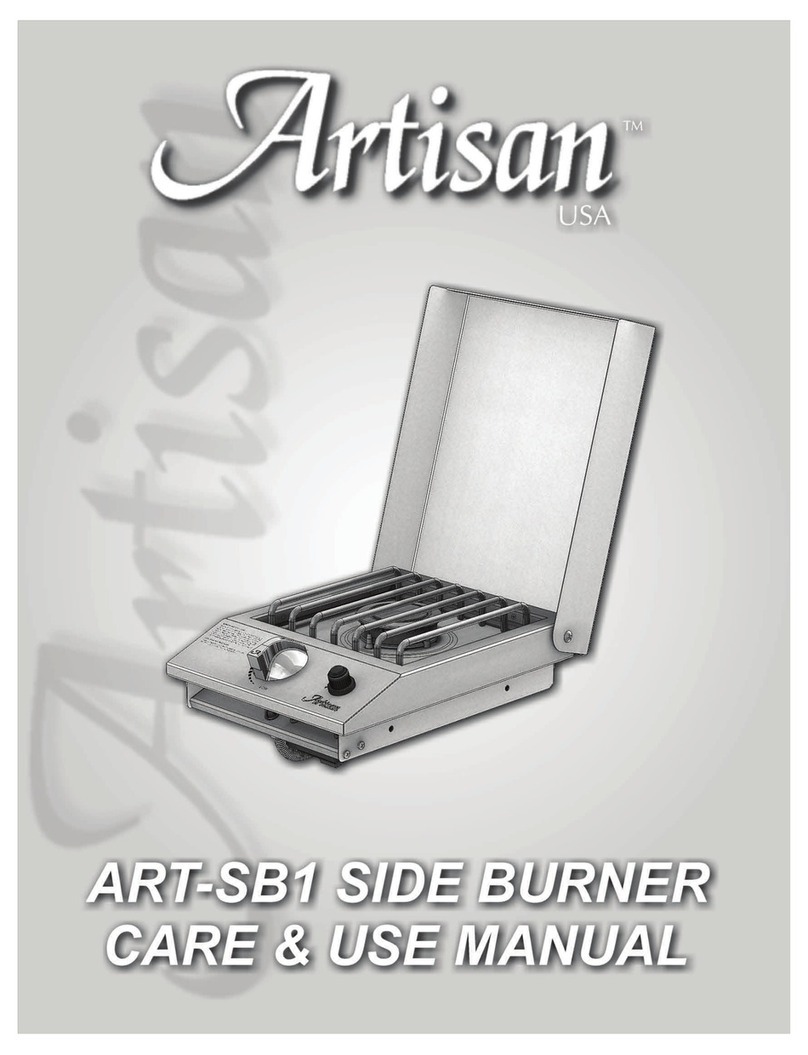
NOTE:Serious DamageTo The Burner MayResult IfThe Blast
Tube Is Extended Into TheCombustion Chamber.
4.5 Secure the burner to the heat exchanger or boiler, using the burner-mounting flange. The burner-
mounting flange must be secured to the blast tube at the selected location for proper insertion
intotheend or front wall ofthe firedunit. A tight seal between the mounting flange andthefront
plate shouldbe accomplished usingthefactory-furnished gasket or a ceramic or other non-
asbestos fiber rope.
5GAS PIPING
5.1Contact you local gas service companyto ensure that adequate gas serviceis available and to
reviewapplicable installation codes for your area. All gas piping installations must be in
accordance with NFPA 54, National Fuel Gas Code,Definitions and General Field
Recommendations, CGA 3.0, Canadian Natural Gas Installation Code CAN/CGA B149.1 or
Propane Installation Code, CGAB 149.2. This product must be installed onlybya Licensed
Plumber or Gasfitter, when installed in the Commonwealth ofMassachusetts.
5.2Size the main gas line inaccordance with Table2. The figures shownare for straight lengths of
pipe at 0.2” w.c. pressure drop, which is considered normal for low-pressure systems. Note that
fittings such as elbows and tees will add tothepipe pressure drop.
Table 2 - Gas Piping PressureDrop Data
EQUIVALENTLENGTH OF STRAIGHTPIPE IN FEET
203040506080100150200
PipeSize In InchesCFH GAS WITH .2” PRESSURE DROP
3/4”152120105938473665445
1”30025021019018015013511075
1-1/4”520425360325300260230190165
1-1/2”800690560500480410370300260
2”17001400120011001000850750600540
2-1/2”30002500210019001800155013751100950
EQUIVALENTLENGTHS OF STANDARD PIPE IN FEETFOR LISTED FITTINGS
Fitting Type3/411-1/2 1-1/222-1/2Nominal Pipe Size In Inches
Std. Tee2.45.57.59.012.013.5
Std. Elbow4.42.73.74.55.56.1
5.3Refer to Figure 3 for details ofgas piping. (Also refer to anyadditional piping diagrams supplied for this
specific unit.)
5.4Mount leakage test andmain gas cocks, main automatic gas valve or combination gas
valve/pressure regulator, andauxiliaryvalves (ifrequired and not factorymounted) per piping
diagramor Figure 3.
5.5Install pressure regulator (not usedwith combination gas valve/pressure regulator) directly
upstreamofmain automatic gas valve(s) and fit drip leg and main gas cockupstreamofregulator
or automatic valve(s).
5.6 The pilot line should be pipedinto the upstreamtapped nipple to minimizepilot linepiping length.
An optional locationis in a tapping located on the main shut-off cock. Refer to Figure 3. For
ease ofservicing we recommend the use ofa union immediatelyupstreamofthe main gas
pressure regulator or combination gas valve/pressure regulator.
4


